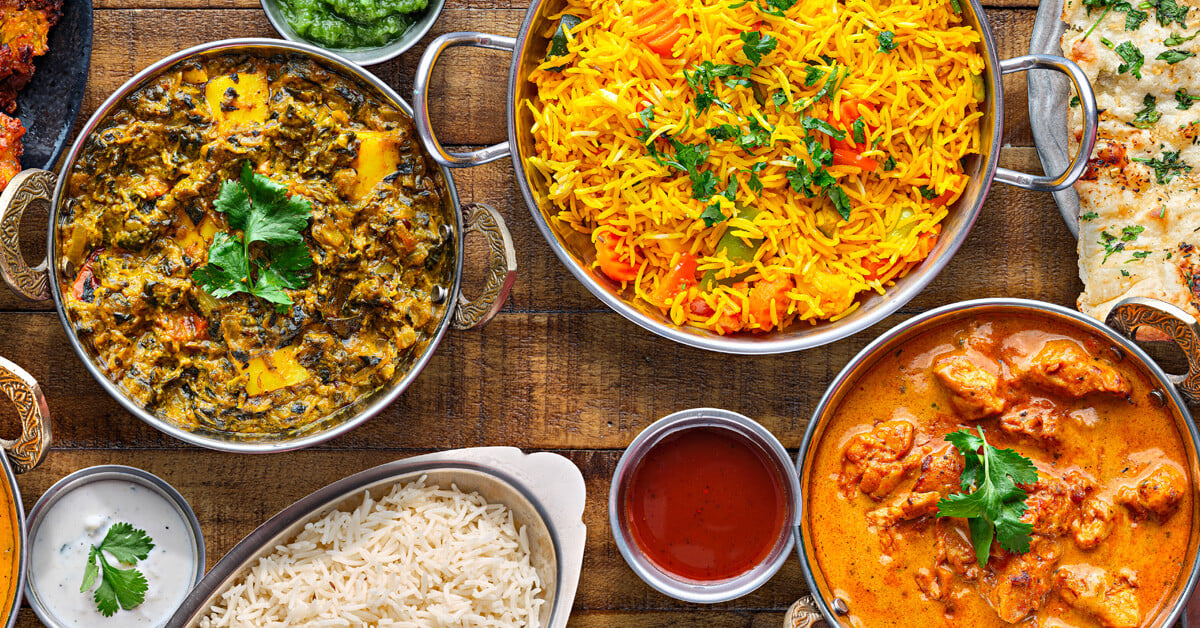Chinese, Japanese, Lebanese, Indian, Korean, Mexican… Ethnic cuisine is now very widespread and is also making its way into Italian eating habits. Curiosity about the gastronomic and nutritional traditions of other peoples has grown a lot in recent years both due to a greater propensity to travel and therefore to experiment with different cuisines, and thanks to a widespread demographic change that has brought with it a greater demand for food products and ingredients that are characteristic of the traditions and culinary preferences of the different ethnic communities present in our territory.
.jpg?width=800&height=533&name=Cibi_etnici_sapori_mondo_UniSR%20(1).jpg)
Without a doubt, Italian and Mediterranean cuisine is one of the most well-known in the world with ancient traditions and important continuous confirmations from the scientific world for its nutritional value and its protective effects against chronic-degenerative diseases and cellular aging. It therefore represents a sustainable food model for both humans and the environment and maintains a strong cultural and social identity. But around the world there are typical foods that maintain a series of characteristics and nutritional properties that are precious for our health and well-being.
A real journey around the world of cuisine, the choice of ethnic foods or dishes represents a way of escaping from the usual Mediterranean routine and at the same time the possibility of creating an evolution of tastes and eating habits that are more varied and complete also from a nutritional point of view.
.jpg?width=697&height=278&name=Cibi_etnici_sapori_mondo_UniSR%20(6).jpg)
Asia
Asian cuisine (especially China and Japan) is one of the oldest cuisines in the world and is influenced by the holistic approach peculiar to Chinese medicine through which one tries to reach a state of well-being while maintaining a balance with what is introduced with food. This cuisine is essentially based on the consumption of foods such as soy and its derivatives (tofu, tempeh, spaghetti, etc.), vegetables, chicken, fish such as shrimp and salmon, and rice using simple and healthy cooking methods such as steaming.
Be careful with fried foods widely used in China and Asian cuisine: the classic tempura of vegetables or fish with vegetable oils adds extra fats that can represent a health risk if consumed too often.
.jpg?width=6202&height=2861&name=Cibi_etnici_sapori_mondo_UniSR%20(13).jpg)
A typical dish of Asian areas is ramen: a complete one-dish meal because it provides all the essential nutrients carbohydrates, proteins and fats. It is in fact made with a base of meat or fish broth (or vegetable broth for the vegetarian version) to which wheat spaghetti (called noodles), seaweed, beef or chicken, fish, tofu or hard-boiled eggs, cooked vegetables and mushrooms are added.
Excessive consumption of ramen can pose a health risk. In fact, the addition of soy sauce and miso makes it excessively rich in sodium which can contribute to increasing heart problems and hypertension. It is therefore advisable to reduce the condiments and increase the portion of vegetables in order to make this dish more balanced.
.jpg?width=800&height=533&name=Cibi_etnici_sapori_mondo_UniSR%20(12).jpg)
The widespread use of rice in Asian cuisine, including for the preparation of rice noodles, makes some typical dishes suitable for those who need to follow a gluten-free diet.
Sushi is a typical Japanese dish, now very popular throughout the world. The combination of rice and raw fish with the addition of seaweed, vegetables and avocado makes it very complete from a nutritional point of view: it ensures a good supply of Omega 3, fatty acids with anti-inflammatory and cholesterol-lowering action, proteins with high biological value and a low fat intake because it is free of condiments. A tip: always combine a portion of cooked or raw vegetables to ensure a good dose of fiber and vitamins and antioxidants, and also pay close attention to the raw materials to ensure good quality and avoid the risk of poisoning.
.jpg?width=800&height=533&name=Cibi_etnici_sapori_mondo_UniSR%20(8).jpg)
Ginger, widely used in Chinese cuisine to flavor dishes based on vegetables and legumes and to prepare hot drinks and teas, is an excellent food with anti-inflammatory and analgesic properties, and is a strong ally for those who suffer from nausea and gastric reflux.
In the areas of India, the basic food is basmati rice. With a very aromatic flavor, it has a low calorie content and a moderate glycemic index, it is very suitable for celiacs and those who need to keep their blood sugar levels under control. Among the basic foods of Indian cuisine there are also legumes.
.jpg?width=800&height=543&name=Cibi_etnici_sapori_mondo_UniSR%20(14).jpg)
Excellent source of protein and dietary fiber, they help improve the lipid profile by reducing the risk of cardiovascular diseases and improving intestinal transit. It is a predominantly vegetarian cuisine but in some areas dishes are prepared based on chicken or beef and rice is substituted for different types of bread. The dishes tend to be very tasty and colorful: spices such as curry, turmeric and cardamom enrich the dishes with flavors and colors; they are a concentrate of antioxidants and functional substances that slow down cellular aging.
Ghee is often utilized as a condiment, being a clarified butter that lacks water and proteins, resulting in a higher fat concentration compared to regular butter. Consequently, cooking with ghee is not considered particularly dietetic or light.
.jpg?width=800&height=533&name=Cibi_etnici_sapori_mondo_UniSR%20(9).jpg)
Middle East and North Africa
In the areas that overlook the eastern Mediterranean (such as Turkey and Egypt) and the western Mediterranean (for example Morocco), the cuisine is based on the principles of the Mediterranean diet with some foods more characteristic of these areas. Couscous and bulgur (foods based on durum wheat) used to prepare tabbouleh are widely consumed.
.jpg?width=800&height=533&name=Cibi_etnici_sapori_mondo_UniSR%20(11).jpg)
Many legumes are consumed, both in salads and soups but also in the form of meatballs, such as the famous falafel, or hummus. Extra virgin olive oil, vegetables and both fresh and dried fruit (such as dates and raisins) are used.
Among the healthiest dishes is the tajine, a chicken or fish stew, with the addition of almonds, vegetables and various spices (saffron, cumin, ginger, coriander). Slow cooking at low temperatures preserves the nutritional properties of the foods and makes it a complete and balanced dish.
.jpg?width=800&height=450&name=Cibi_etnici_sapori_mondo_UniSR%20(7).jpg)
South America
Tortillas, tacos, guacamole. South American and Mexican cuisine is very colorful and has intense, bold flavors that are a little spicy. Rice and beans is a simple dish but very nutritionally balanced. The use of sauces and the tendency to use frying as the preferred cooking method make this cuisine not very healthy. Fresh vegetables and fruit are also scarce.
Corn is widely used, and is the basis of many typical dishes such as tortillas and fajitas. It is the primary source of carbohydrates in the South American diet, along with rice, potatoes and quinoa, a pseudocereal that is very rich in protein as well as dietary fiber and low glycemic index carbohydrates.
.jpg?width=697&height=470&name=Cibi_etnici_sapori_mondo_UniSR%20(2).jpg)
The protein portion in the culinary tradition of South American countries is essentially represented by beef and pork. In Argentina and Mexico, grilled meat is in fact one of the typical dishes, and is characterized by slow cooking that leaves the meat very soft and less exposed to the formation of toxic substances (such as acrylamide and PAHs: polycyclic aromatic hydrocarbons) that generally form with this cooking method.
For vegetarian versions, beans are the most popular choice and are offered in soups or in burrito fillings, often combined with meat and peppers, making these recipes more caloric and difficult to digest.
.jpg?width=4928&height=3264&name=Cibi_etnici_sapori_mondo_UniSR%20(16).jpg)
Ceviche, on the other hand, is a typical Peruvian dish made of raw fish marinated in lime with onions, hot peppers, salt and pepper and is lighter and nutritionally valid.
Finally, avocado is a basic food for the preparation of guacamole, it is an excellent source of omega 3, essential fatty acids that have an anti-inflammatory and antioxidant role.
.jpg?width=800&height=533&name=Cibi_etnici_sapori_mondo_UniSR%20(15).jpg)
References
- Review Asia Pac J Clin Nutr. 2008:17 Suppl 1:294-5. The issues in assessment and evaluation of diet in Asia. Hee Young Paik.
- Adv Nutr. 2024 Jul;15(7):100250. doi: 10.1016/j.advnut.2024.100250. Epub 2024 Jun 20. Dietary Patterns in Asia: Current Evidence and Future Directions. Lukas Schwingshackl.
- Nutrients. 2020 Jan 26;12(2):327. doi: 10.3390/nu12020327. Food Combinations in Relation to the Quality of Overall Diet and Individual Meals in Japanese Adults: A Nationwide Study. Kentaro Murakami et al.
- Clin Investig Arterioscler. 2022 Jun:34 Suppl 1:S17-S23. doi: 10.1016/j.arteri.2021.12.003. Epub 2022 Feb 16. The future of diet: what will be eating? Francisco Pérez-Jiménez et al.


.jpg?width=800&height=533&name=Cibi_etnici_sapori_mondo_UniSR%20(1).jpg)
.jpg?width=697&height=278&name=Cibi_etnici_sapori_mondo_UniSR%20(6).jpg)
.jpg?width=6202&height=2861&name=Cibi_etnici_sapori_mondo_UniSR%20(13).jpg)
.jpg?width=800&height=533&name=Cibi_etnici_sapori_mondo_UniSR%20(12).jpg)
.jpg?width=800&height=533&name=Cibi_etnici_sapori_mondo_UniSR%20(8).jpg)
.jpg?width=800&height=543&name=Cibi_etnici_sapori_mondo_UniSR%20(14).jpg)
.jpg?width=800&height=533&name=Cibi_etnici_sapori_mondo_UniSR%20(9).jpg)
.jpg?width=800&height=533&name=Cibi_etnici_sapori_mondo_UniSR%20(11).jpg)
.jpg?width=800&height=450&name=Cibi_etnici_sapori_mondo_UniSR%20(7).jpg)
.jpg?width=697&height=470&name=Cibi_etnici_sapori_mondo_UniSR%20(2).jpg)
.jpg?width=4928&height=3264&name=Cibi_etnici_sapori_mondo_UniSR%20(16).jpg)
.jpg?width=800&height=533&name=Cibi_etnici_sapori_mondo_UniSR%20(15).jpg)